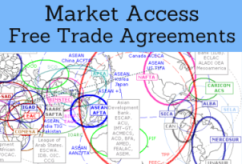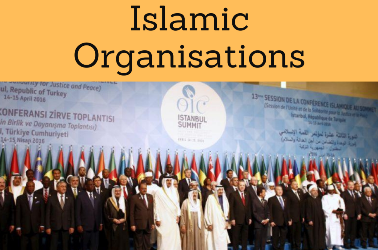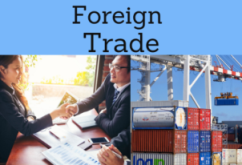Business in Yemen, Sana'a, Yemeni Economy
Yemeni Foreign Trade. Economic policy (Business). Tawakkol Karman

The economic policy of the Republic of Yemen is based on a market mechanism and economic freedom
Yemen has significant economic resources, not been exploited economically, especially oil and petrol field, fisheries and different mineral resources
- Introduction to the Republic of Yemen (Middle East)
- Case Study: Tawakkol Karman - Nobel Peace Prize
- Yemeni Economy
- Key Yemeni Economic Sectors:
- Agriculture
- Fishing
- Mining
- Doing Business in Sana'a
- Yemeni International Trade
- Access to the Yemeni market
- Business Plan for Yemen
International Trade and Business in Yemen


The educational aims of the Subject “Foreign Trade, Logistics and Business in Yemen” are:
- To analyze the Yemeni Economy, Logistics and Foreign Trade
- To conduct research on business opportunities in Yemen
- To explore the Yemeni trade relations with the student's country
- To learn about Yemeni Trade Agreements
- To develop a business plan for the Yemeni market

The Subject “Foreign Trade, Logistics and Business in Yemen” is included within the curriculum of the following academic programs at EENI Global Business School:

Masters: International Business, Foreign Trade.

- Subject Credits “Doing Business in Yemen”: 1

International Trade, Logistics and Business in Yemen.

Yemeni Preferential Access and Trade Agreements:
- Islamic Trade Preferential System
- Greater Arab Free Trade Area (GAFTA)
- Islamic Centre for Development of Trade
- Arab Bank for Africa (BADEA)
- Indian-Ocean Rim Association
- European Union-Yemen
- EU's Generalized System of Preferences (GSP) - Everything But Arms
- European Union-Yemen Cooperation Agreement
- Yemen is a beneficiary of the European Investment Bank

- WTO (in process of accession)
- Kyoto Convention (Containers)
- BIC (Containers)
- Chicago Convention (ICAO)
- International Maritime Organization
- International Road Transport Union (IRU)

- Arab League
- Organization of Islamic Cooperation (OIC)
- Standing Committee for Economic and Commercial Cooperation of OIC (COMCEC);
- Islamic Chamber of Commerce
- Islamic Centre for Development of Trade
- Statistical Economic Centre for Islamic Countries
- Asia-Middle East Dialogue
- Islamic Development Bank
- Summit of South American-Arab Countries
- Economic Commission for Western Asia (ESCWA)
- Arab Trade Financing Programme

- United Nations
- World Bank
- World Trade Organization (WTO)
- International Monetary Fund
The Republic of Yemen (الجمهورية اليمنية).
- Borders of Yemen: Saudi Arabia and Oman
- Yemeni Capital: Sana'a (صنعاء)
- Largest Seaport in Yemen: Port of Aden
- Official language of Yemen: Arabic
- Yemeni Area: 528,076 km²
- Yemeni population: 25.4 million people
- Abolition of Slavery in Yemen: 1962
Religion in Yemen.
- Main religion is Sunni Islam
- Fiqh (Islamic Jurisprudence): Fiqh-al-Hambali
- 40% of the population is Shiite
Yemen belongs to the Arab Economic Area of Islamic Civilization.
Yemeni Economy.
- Yemen ranks within the economies that are less growing
- Currency of Yemen: Yemeni Rial (YER)
- The General Investment Authority of the Republic of Yemen, being aware of the significance of involvement of the private sector in the development process in Yemen, and the necessity to bring about a greater leap in the investment level of various sectors, in the achievement of diversifying the economy of Yemen, and coordination with some concerned agencies, prepared many opportunities, which contains Foreign Direct Investment (FDI) opportunities in production, agricultural and services sectors recently there are many opportunities available in Yemen

Yemeni Foreign Trade.
- Yemeni Exports constitute 33.4% of GDP and imports constitute 29.3% of GDP. Therefore, the exposure ratio for the Yemeni economy reached 63%
- Main international partners of Yemen are Thailand, China, South Korea, Singapore, Japan, and Saudi Arabia
- The largest Yemeni Exports are related to crude products that constitute 94-97% of the gross exports whereas direct consumption products constitute the rate between 1-4%, and crude goods at imports range between 55-60% of the gross imports that constitute direct consumption goods 15-20% and capital goods constitute 20-25%
- Yemen imports from the Arab Countries between 30-40% of the gross imports whereas its exports to the Arab Countries range between (5-10%) of the gross exports to abroad
- The Asian Countries, not Arabian, are considered as the largest market for the Yemeni exports
EENI delivers to HRH Prince Alwaleed bin Talal a Master Honoris Causa.
(c) EENI Global Business School (1995-2025)
Top of this page









 WhatsApp
WhatsApp

 or
or 
